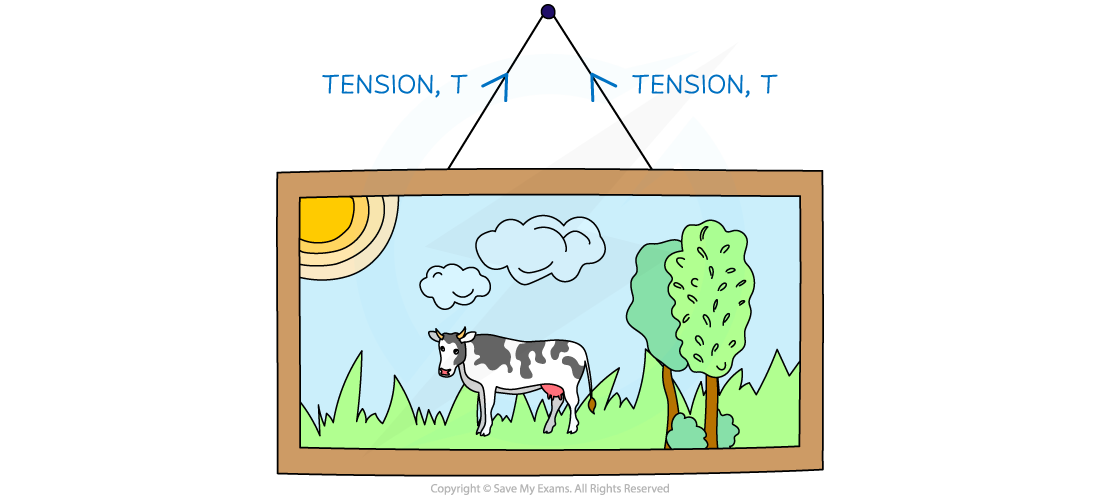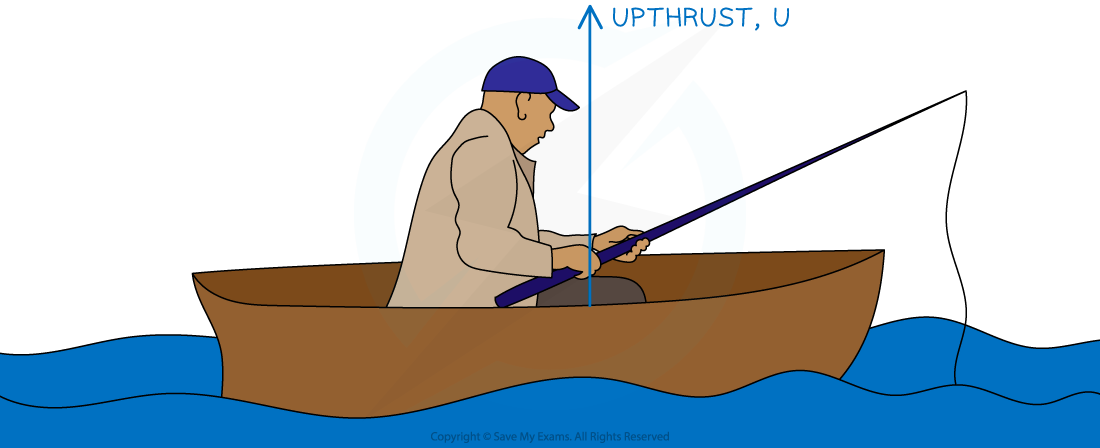Types of Force
- A force is defined as:
A push or a pull that acts on an object due to the interaction with another object
- Forces can affect bodies in a variety of ways:
- Changes in speed: forces can cause bodies to speed up or slow down
- Changes in direction: forces can cause bodies to change their direction of travel
- Changes in shape: forces can cause bodies to stretch, compress, or deform
Different forces

The effects of different forces on objects
Tension
- Tension is:
The force experienced by a cable, rope, or string when pulled, hung, rotated or supported
- This is normally labelled as T on free body diagrams
Tension force on a Picture Frame

Tension always acts away from the mass
Normal Contact Force
- The normal contact force is:
The force arising when an object rests against another object acting at a 90° angle to the plane of contact
- It is sometimes also referred to as the reaction force
- This is normally labelled as N or R on free body diagrams
- This force arises from Newton's Third Law
Normal Contact Force

Normal contact force is the force with which a surface pushes against an object. The normal contact force always acts perpendicularly to the surface
Upthrust
- Upthrust is:
The upward buoyancy force acting on an object when it is in a fluid
- Upthrust can occur in liquids and gases
Upthrust on a Boat

Upthrust always acts upwards
Friction
- Friction is:
The force that arises when two surfaces are in contact with each other
- Friction always opposes the motion
- This is normally labelled as F or Fr on free body diagrams
Force of Friction Acting on a Car

Friction always acts at the point where the objects are in contact, and in the opposite direction to the direction of motion










